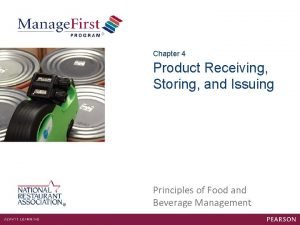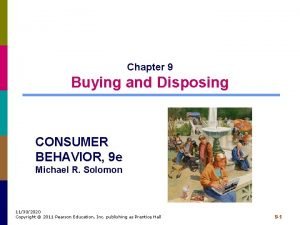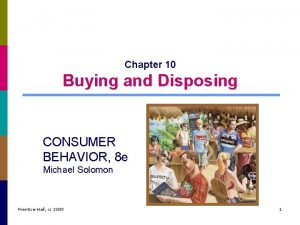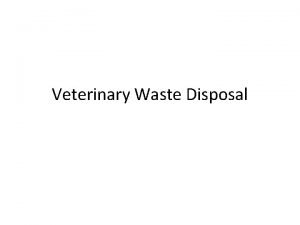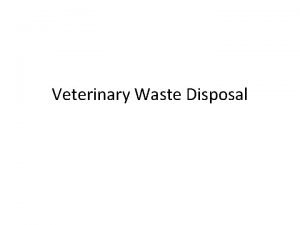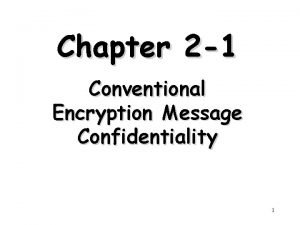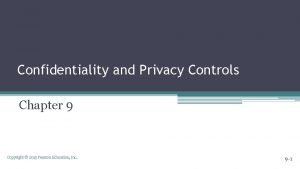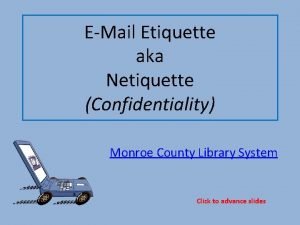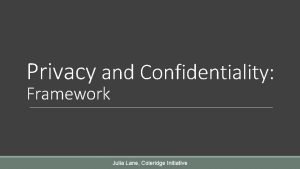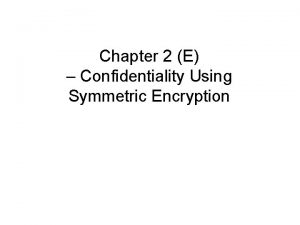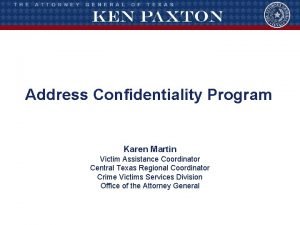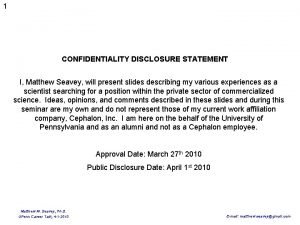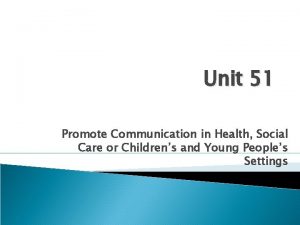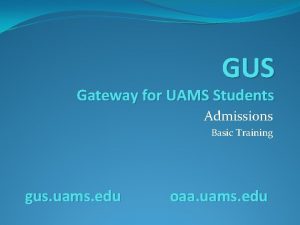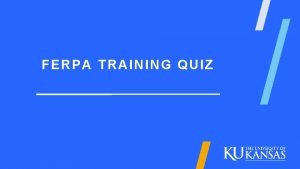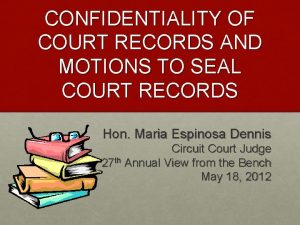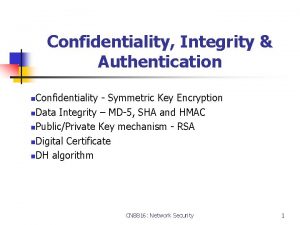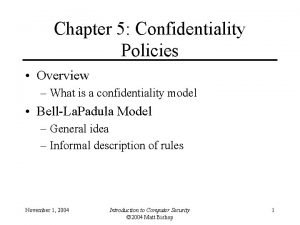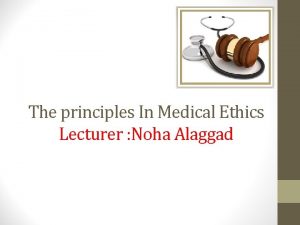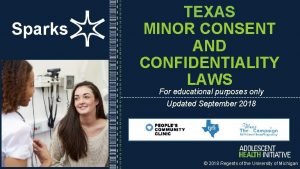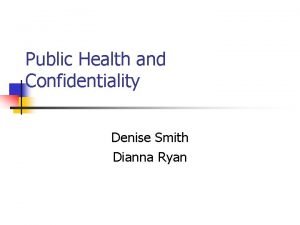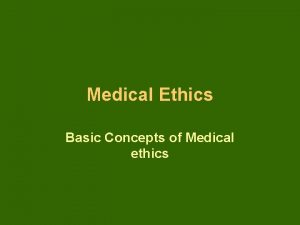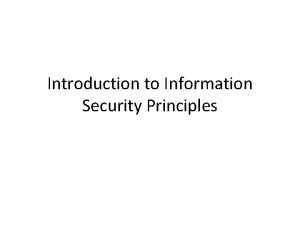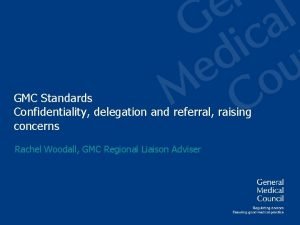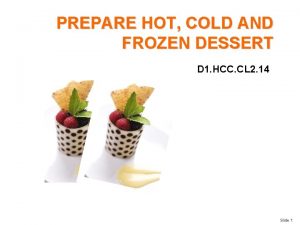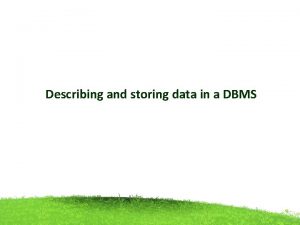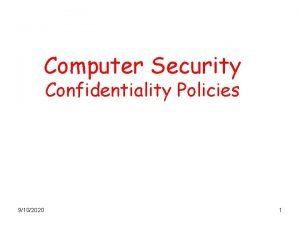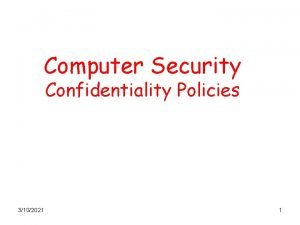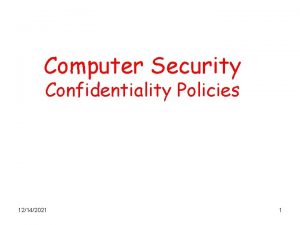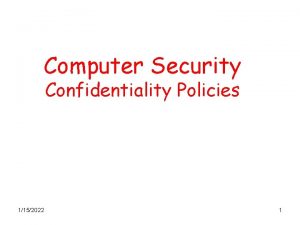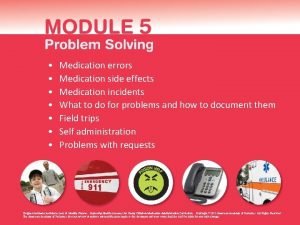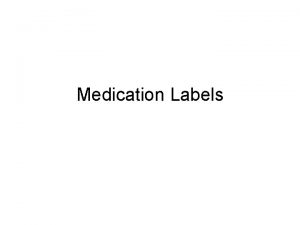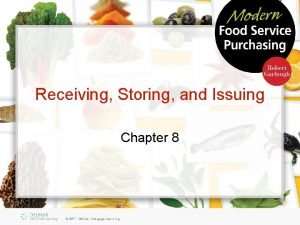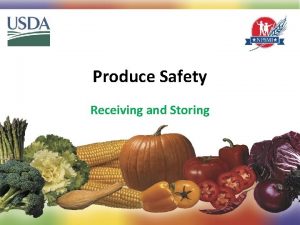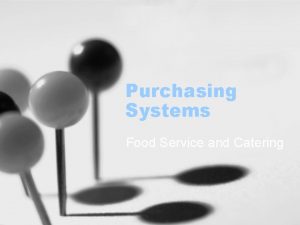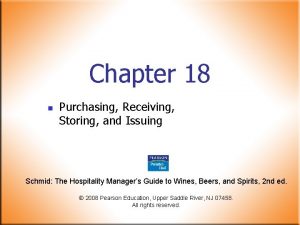Forms Policies Confidentiality Receiving and storing medication Disposing































- Slides: 31

• • • Forms Policies Confidentiality Receiving and storing medication Disposing of medication Original document included as part of Healthy Futures: Improving Health Outcomes for Young Children Medication Administration Curriculum. Copyright © 2013 American Academy of Pediatrics. All Rights Reserved. The American Academy of Pediatrics does not review or endorse any modifications made to this document and in no event shall the AAP be liable for any such changes.

Medication Administration Curriculum - Module 2 What Forms Are Needed? 1. Child Health Assessment – May be called by many different names – Care Plan or Individual Health Plan if child has chronic or life-threatening condition 2. Medication Administration Packet – Authorization/Consent to Give Medicine – Receiving Medication – Medication Log 3. Emergency Contact Form (may be combined with other forms) 4. Health Care Professional’s Order – Rx label can serve as the order

Medication Administration Curriculum - Module 2 Child Health Assessment A full health assessment: • Physical examination results • Immunization record • Medical conditions • Preventive health screenings, if required

Medication Administration Curriculum - Module 2 Care Plans or Individualized Health Plans for Children with Special Health Care Needs • The usual Child Health Assessment might not be detailed enough to allow the best care for the child • The care plan should: – Be completed by a health care professional – Provide information about any ongoing or emergency medication – Outline modifications to: • diet • environment • activities

Medication Administration Curriculum - Module 2 Medication Administration Packet: Authorization to Give Medicine • • To be completed by parent or guardian Child’s Information Prescriber’s Information Permission to Give Medication

Medication Administration Curriculum - Module 2 Medication Administration Packet: Receiving Medication • Checklist of steps to take to receive and safely store medication • To be completed by child care staff • Steps include: – checking labels and containers – ensuring that all forms are complete – questioning parent/guardian to gather necessary information

Medication Administration Curriculum - Module 2 Medication Administration Packet: Medication Log • To be completed by child care staff • Should include the following: – – – Name of child Medication Day, time, dose, route, and staff signature Comments and observations Return or disposal of medication notation • Prescription and OTC medication must all be logged

Medication Administration Curriculum - Module 2 Emergency Contact Form • How to contact the family • Permission to speak with the health care professional regarding a specific child’s health needs

Medication Administration Curriculum - Module 2 Health Care Professional’s Orders • • • Licensed Health Care Professional written order for each medication, both prescription and over-the-counter. Parents should co-sign or instructions should match. Should include name of child, name of medication, form of medication (pills, inhalers, etc), dosage, how often to give and when. Administration of long-term/ongoing medications, should be paired with a Care Plan. Non-prescription sunscreen and insect repellent do not require orders from the Health Care Professional, only the parents’ instructions. Toothpaste and non-medicated lotions/creams are not considered medications. **Some states’ licensing regulations do not require written orders from a health care professional or only require this for prescription medications.

Medication Administration Curriculum - Module 2 Health Care Professional’s Orders, continued • “As needed” or “prn” orders should have specific information about what symptoms qualify as needing medication • State regulations vary about telephone orders – Check your state regulations carefully – All telephone orders should be followed by written documentation

Medication Administration Curriculum - Module 2 Health Care Professional’s Orders, continued Must be clear and specify: • Child’s first and last name • Date of order • Name of medication • Amount (dose) • Time, route, and frequency • Signature of licensed health care professional • Expiration date of medication Might list: • Reason for medication • Possible side effects or adverse reactions, if any

Medication Administration Curriculum - Module 2 Medication Policy: What It Should Include A written policy should state: • Who will give medication • What medication will be given • Where will medication be given and stored • When medication will be given • How confidentiality will be maintained • What procedures and forms are to be used for permission and documentation • What procedures are used when giving medication (5 Rights) • What procedure should take place in the event of a medication error or incident

Medication Administration Curriculum - Module 2 Policy: Who Will Give Medication? • The policy should state: – Who is designated to give medication – Who will serve as the alternate if the designated person is unavailable • The designated person should: – Have the qualifications for the task – Be relieved of other duties when administering medication • Some states require formal performance evaluation of the designated medication administration staff by a health care professional

Medication Administration Curriculum - Module 2 Policy: What Medications Will Be Given? • The policy should say why medications are given and what types of medications are appropriate to give in child care – The policy should apply to prescription and OTC medications – Facilities should not administer folk or homemade remedy medications or treatment – Homeopathic and herbal medications are only given with an order from an authorized health care professional and proper labeling

Medication Administration Curriculum - Module 2 Policy: Procedures • Step-by-step procedures: 5 Rights • Which forms are necessary prior to administering medication • How health care professional’s orders will be handled: – telephone orders – child-specific orders – “as needed” orders • The first dose of medication should be given by the parent/guardian at home • Procedures for errors or incidents

Medication Administration Curriculum - Module 2 Confidentiality • Confidential information: – Information that someone may not want to share – Information that someone will give permission to share only on a “need to know” basis • Establish and follow a written policy on confidentiality of the records of children • Permission to share confidential information should be written, not just oral • Policy may be further defined by state or local statute or regulation

Medication Administration Curriculum - Module 2 Federal Law States… • All medical records MUST be kept confidential: – Secure transfer of medical records – Permission required for electronic transfer of medical records – Confidential treatment of medical records • Health Insurance Portability and Accountability Act (HIPAA) covers confidentiality in health care settings • Family Educational Rights and Privacy Act (FERPA) applies to school settings but not specifically to child care settings

Medication Administration Curriculum - Module 2 Receiving Medication: Prescription Original medication packaging should have: • Pharmacy name and number • Prescriber’s name and number • Prescription number • Date prescription was filled • Child’s first and last name • • Name of medication Strength of medication Refills Quantity (QTY) Manufacturer (MFG) Expiration date Instructions for administration, dose, etc • Instructions for storage

Medication Administration Curriculum - Module 2 Receiving Medication: Over-the-Counter • Verify that the strength of the medication is appropriate for the child’s age • Original medication packaging should have: – – – Product name Active ingredients Purpose Uses Warnings – – – Directions Expiration date Inactive ingredients Specific instructions for child, dose, etc Other information • Make sure nothing blocks the label

Medication Administration Curriculum - Module 2 Process to Receive Medication • • Receive medication Match label with permission form and instructions Log medication with Receiving Medication form Ask parent/guardian questions: – – When was the last time it was taken? How do you give your child medication? What kinds of side effects may be caused by the medication? What successful techniques do parents use? • Store medication

Medication Administration Curriculum - Module 2 Receiving Medication Form • • • Child’s name Name of medication Date medication received Safety Check Controlled substances need special tracking If the necessary information is not present or doesn’t match, DO NOT accept or give the medication until the issue is resolved

Medication Administration Curriculum - Module 2 Safe Storage and Handling • Child resistant caps • Store in out-of-reach places • Observe for signs of tampering – Packaging that shows cuts, tears, slices, or other imperfections – Anything that looks suspicious • Check for special storage instructions • Be aware of product look-alikes

Medication Administration Curriculum - Module 2 Tips for Parent/Guardians • Ask pharmacist to divide medication into 2 bottles, each with its own label – 1 to be kept at home and 1 to be kept at the child care facility – Pharmacists may “split” the prescription upon request • Field Trips – Ask if medication can be taken at an alternate time

Medication Administration Curriculum - Module 2 Medication Storage Video Click to play video

Medication Administration Curriculum - Module 2 Medication Storage Designated area – Secured, locked cabinet – Cool, dark place – Limited access Refrigeration – – If needed 36°F to 46°F Separation from food Spill-proof container

Medication Administration Curriculum - Module 2 Staff Medication • Staff medication should be stored safely and should not be accessible to children • Staff medication should not be kept in unsecure purses or bags

Medication Administration Curriculum - Module 2 Exceptions to Locked Storage • Non-prescription diaper creams • Non-prescription sunscreen • Emergency medications (Epi. Pen®, asthma rescue medications, Glucagon®, Diastat®) – Emergency medications should stay close to children and can be stored in a pouch that stays with a supervising adult • All of the medication listed above must be stored out of the reach of children

Medication Administration Curriculum - Module 2 Create a Safe Medication Administration Area A safe medication area is: • Situated where the designated medication administration person is able to concentrate on administering medication • Stocked with medication and supplies within easy reach • Clean, well lit, and free of clutter • Confidential and quiet

Medication Administration Curriculum - Module 2 Disposing of Medication • If medication or order is out-of-date or medication is left over, return to parent for disposal and record that on the permission or intake form – This is the preferred method • If medication cannot be returned to parents, dispose of the medication in a secure trash container that children cannot access • Controlled medication needs special disposal procedures • Contaminated medication should be disposed of and replaced promptly

Medication Administration Curriculum - Module 2 Scenario 1: Nick • Nick is 15 -months-old and has an ear infection. Nick needs a noon time dose of amoxicillin suspension for this week and part of next week. The medication requires refrigeration and it must be shaken before being given. Nick has already received several doses of amoxicillin at home.

Medication Administration Curriculum - Module 2 Scenario 2: Maria • Maria is 3 -years-old and has eczema. She needs hydrocortisone cream applied to her arms at noon time. This is an OTC medication with a brand name of Aveeno® also makes other non-medicated skin moisturizers as well, but the medication that is being requested is an OTC hydrocortisone cream. Maria has had this medication before.
 Purchasing, receiving, storing and issuing
Purchasing, receiving, storing and issuing Shopping buying disposing
Shopping buying disposing Lateral cycling consumer behavior
Lateral cycling consumer behavior Veterinary waste disposal legislation
Veterinary waste disposal legislation Disposing of veterinary clinical waste
Disposing of veterinary clinical waste Conventional encryption and message confidentiality
Conventional encryption and message confidentiality Confidentiality and privacy controls
Confidentiality and privacy controls Netiquette of confidentiality and respect
Netiquette of confidentiality and respect Contracted form of will not
Contracted form of will not Strong forms
Strong forms Why is confidentiality important
Why is confidentiality important Confidentiality using symmetric encryption
Confidentiality using symmetric encryption Address confidentiality program texas
Address confidentiality program texas Matthew seavey
Matthew seavey Professional secrecy in medical ethics
Professional secrecy in medical ethics Potential tension between maintaining confidentiality
Potential tension between maintaining confidentiality Uams confidentiality agreement
Uams confidentiality agreement Safe schools ferpa training answers
Safe schools ferpa training answers Confidentiality ethical principle
Confidentiality ethical principle Confidentiality
Confidentiality Notice of confidential info rule 2-420
Notice of confidential info rule 2-420 Confidentiality
Confidentiality Confidentiality chapter 5
Confidentiality chapter 5 Principle of justice in bioethics
Principle of justice in bioethics Texas confidentiality laws for minors
Texas confidentiality laws for minors Confidentiality
Confidentiality Confidentiality in medical ethics
Confidentiality in medical ethics Confidentiality integrity availability
Confidentiality integrity availability Gmc confidentiality
Gmc confidentiality Confidentiality disclaimer presentation
Confidentiality disclaimer presentation Accompaniments garnishes and decorations for desserts
Accompaniments garnishes and decorations for desserts Describing and storing data in dbms
Describing and storing data in dbms
